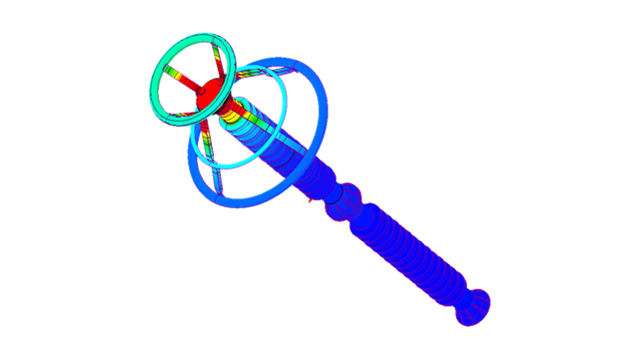Simcenter MAGNET
Perform low frequency electromagnetic field simulations

Simcenter MAGNET 2D/3D is a powerful electromagnetic field simulation solution for performance prediction of motors, generators, sensors, transformers, actuators, solenoids, or any component with permanent magnets or coils. With this efficient-to-use and accurate software, you can optimize, design, and analyze simple to complex electromagnetic and electromechanical devices.
Simcenter MAGNET virtual prototyping is both cost and time-efficient. Parametric and optimization studies allow the exploration of multiple configurations for performance improvements. The accurate replication of the extreme operating conditions provides insight into loss and temperature hotspots, permanent magnet demagnetization, unused material, and failure analysis through fault conditions.

AC Electromagnetic Simulation
AC electromagnetic simulations are based on a single frequency, which reduces the simulation time. With this approach, you can simulate electromagnetic fields in and around current-carrying conductors, in the presence of isotropic materials that may be conducting, magnetic, or both. This accounts for displacement currents, eddy-current and proximity effects, which are important in hotspots analysis.

Advanced Electromagnetic Material Modeling
The accuracy of low-frequency electromagnetic simulations is highly dependent on material data. Simcenter electromagnetic advanced material modeling accounts for nonlinearities, temperature dependencies, demagnetization of permanent magnets, hysteresis loss and anisotropic effects. This makes it possible to analyze effects such as demagnetization in permanent magnets to verify their service life, analyze frequency dependent losses in thin parts while reducing solution time and account for all losses for an accurate energy balance.

Circuit & System Modeling

Electric Field Simulations
The finite element method for electric fields can be used to simulate static electric fields, AC electric fields and transient electric fields. It can also simulate current flow which is the static current densities produced by DC voltages on electrodes in contact with conducting materials.
Electric field simulations are typically used for high-voltage applications to predict insulation and winding failures, lightning impulse simulations, partial discharge analysis and impedance analysis.

Electromagnetic-Motion Simulation
The electromagnetic simulation of transient fields can include motion. It is possible to simulate rotational, linear and arbitrary motion with six degrees of freedom (X, Y, Z, Roll, Pitch, and Yaw). This is available for an unlimited number of moving components, induced currents and mechanical interactions.
The mechanical effects include viscous friction, inertia, mass, springs, and gravitation, as well as constraints on movement imposed by mechanical stops. Arbitrary load forces can be specified as a function of position, speed, and time. Induced currents due to motion are taken into account.

Transient Electromagnetic Simulation
Permits the simulation of complex problems that involve time-varying arbitrary-shaped current or voltage sources and outputs with nonlinearity in materials and frequency-dependent effects. This includes oscillations in electromechanical devices, demagnetization in permanent magnets, switching effects, eddy-currents induced torque, skin and proximity effects.
